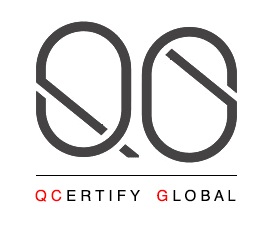How to Maintain Your ISO Certification
Achieving ISO certification is a significant milestone for any organization, signaling commitment to quality, efficiency, and continuous improvement. However, the journey doesn’t end with the certification; maintaining it requires ongoing effort and vigilance. Here’s a comprehensive guide on how to maintain your ISO certification effectively.
1. Understand the Importance of Continuous Compliance
ISO certification isn’t a one-time achievement but a commitment to maintaining standards consistently. Continuous compliance ensures that your organization adheres to the principles and requirements of the ISO standard, fostering a culture of quality and continuous improvement.
2. Regular Internal Audits
Conducting regular internal audits is crucial. These audits help identify areas of non-compliance, opportunities for improvement, and ensure that processes are being followed as per the ISO standards. Schedule audits periodically and use the findings to enhance your quality management system (QMS).
Tips for Effective Internal Audits:
Train your internal auditors thoroughly.
Develop a clear audit plan and checklist.
Document findings and corrective actions.
3. Stay Updated with ISO Standards
ISO standards are periodically reviewed and updated. Stay informed about any changes or revisions to the standards relevant to your certification. This ensures that your processes and practices remain aligned with the latest requirements.
How to Stay Updated:
Subscribe to ISO newsletters and updates.
Participate in ISO-related forums and communities.
Engage with certification bodies for the latest information.
4. Continuous Training and Development
Invest in continuous training and development for your staff. Ensure that everyone in the organization understands the importance of ISO standards and their role in maintaining compliance. Regular training sessions help reinforce best practices and keep employees informed about any changes.
Training Tips:
Develop a training calendar with regular sessions.
Include ISO standards in your onboarding process.
Encourage employees to attend external workshops and seminars.
5. Document Control and Management
Effective document control is critical for maintaining ISO certification. Ensure that all documents related to your QMS are up-to-date, accurately maintained, and easily accessible. This includes policies, procedures, work instructions, and records.
Best Practices for Document Control:
Implement a robust document management system.
Regularly review and update documents.
Ensure proper version control and authorization.
6. Management Review Meetings
Conduct regular management review meetings to evaluate the performance of your QMS. These meetings should focus on assessing compliance, reviewing audit results, monitoring objectives and key performance indicators (KPIs), and identifying areas for improvement.
Key Elements of Management Review Meetings:
Review of audit results and corrective actions.
Assessment of customer feedback and complaints.
Analysis of process performance and product conformity.
Evaluation of resources and training needs.
7. Corrective and Preventive Actions
Develop a systematic approach to managing corrective and preventive actions (CAPA). When non-conformities are identified, take immediate corrective action to address the issue and prevent recurrence. Implement preventive measures to mitigate potential risks.
Steps for Effective CAPA:
Identify the root cause of non-conformities.
Implement corrective actions promptly.
Monitor the effectiveness of actions taken.
Document and communicate lessons learned.
8. Engage with Certification Bodies
Maintain regular communication with your certification body. They can provide valuable insights, updates, and support to help you maintain compliance. Schedule periodic surveillance audits as required to demonstrate ongoing adherence to the ISO standards.
Engagement Tips:
Seek guidance on any questions or concerns.
Request feedback on audit findings and improvements.
Participate in certification body training and events.
9. Foster a Culture of Continuous Improvement
Promote a culture of continuous improvement within your organization. Encourage employees to identify opportunities for improvement and innovate processes. Recognize and reward contributions that enhance your QMS and overall organizational performance.
Ways to Foster Continuous Improvement:
Implement suggestion schemes and feedback loops.
Conduct regular brainstorming and improvement sessions.
Celebrate successes and share best practices.
Conclusion
Maintaining ISO certification requires dedication, systematic processes, and a proactive approach. By embedding the principles of continuous improvement, regular audits, effective document control, and ongoing training, your organization can ensure sustained compliance and reaping the benefits of ISO certification.
Remember, the goal is not just to maintain the certification but to continuously enhance your processes and deliver exceptional value to your customers.





